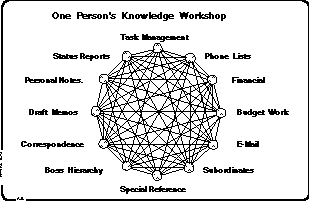 Figure-1:: Each functional domain is a candidate for working interchange
with all others.
Figure-1:: Each functional domain is a candidate for working interchange
with all others.
+++ 2A1
- Figure-D1: D1: AJL 1:46:16 2A1A
As computers become cheaper and we learn more about harnessing them in our cooperative work, they will come to support an increasing number of different domains of knowledge work. Moreover, the sphere of computer-supported activity within each domain will steadily expand as more function and more skill become employed. 1B
It is predictable that increasing functional overlap will occur as these expanding domains begin to overlap. It has become apparent to me that someday all of our basic knowledge-work domains will be integrated within one coherent "organizational knowledge workshop." This leads to thinking about an over-all, integrated architectural approach to the ever larger set of common knowledge work capabilities emerging within a multi-vendor environment. 1C
Much has been accomplished to date in standards and protocols in the highly active field of networked workstations & servers, where "interoperability between hardware and/or software modules" has become a central theme. 1D
This paper considers the "interoperability between knowledge domains." This interoperability theme will be increasingly important for a workable CSCW framework as the scope and degree of CSCW increases. Dramatic increases will predictably create a marked paradigm shift about how to organize and operate cooperative human endeavors. I think that two phenomena will yield changes and a paradigm shift that will make this interoperability of paramount importance: 1E
(2) awareness and importance of CSCW is emerging, with a predictable trend toward our doing more and more of our personal and cooperative knowledge-work online. 1E2
And for another, we would prefer to avoid investing our research, product development, or organizational-change resources toward ends that won't be interoperably compatible within that future, radically different paradigm. 1F2
 Figure-1:: Each functional domain is a candidate for working interchange
with all others.
Figure-1:: Each functional domain is a candidate for working interchange
with all others.
What kind of interoperability do you have now? I happen to think that the interoperability provided today within most CSPW domains has a great deal of improvement yet to be pursued. But I'd resist any serious argument about this unless it be approached within the context of a coherent "CSCW interoperability framework" such as outlined below. Let me say in warning, though, that from such a framework I will contend that the marketplace for CSPW will change drastically as CSCW takes hold within our larger organizations and their inter-organizational communities. 2C
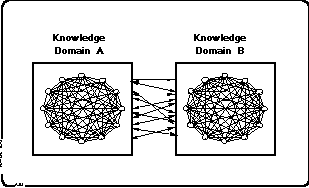 Figure-2:: Close cooperation between compound knowledge domains puts new
demands on knowledge-work interchange.
Figure-2:: Close cooperation between compound knowledge domains puts new
demands on knowledge-work interchange.
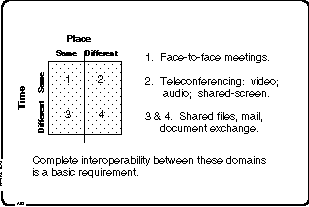 Figure-3:: Collaborative processes generally considered within four separate
domains.
Figure-3:: Collaborative processes generally considered within four separate
domains.
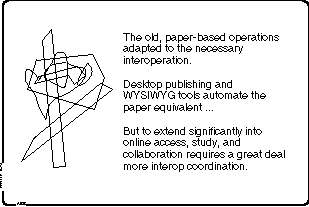 Figure-4:: Consider some knowledge domains with which you intersect significantly.
Figure-4:: Consider some knowledge domains with which you intersect significantly.
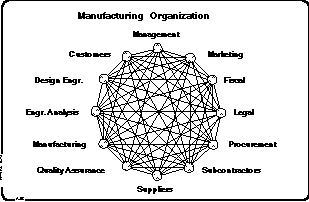 Figure-5:: Each functional domain is a candidate for working interchange
with all others.
Figure-5:: Each functional domain is a candidate for working interchange
with all others.
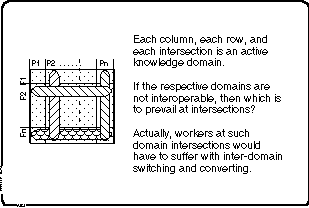 Figure-6:: Consider the domains within a matrix organization of projects
and functions.
Figure-6:: Consider the domains within a matrix organization of projects
and functions.
A Large Aerospace Program. McDonnell Aircraft Company is participating in a bid to build the Advanced Tactical Fighter ("ATF") for the Air Force. It's possibly one of the most technically complex products anyone has ever dealt with. 8B
On top of that, they have an urgent mandate to start practicing "concurrent engineering," where the designers have to work concurrently with the manufacturing engineers. This will require intense back-and-forth cooperation between the two knowledge domains, which no one really knows yet how to do on such a large scale. 8C
Also, significant design and manufacturing problems are often delegated to the first-tier suppliers shown in Figure-7, so the cooperation with that tier is also close and intense. Then the first tiers hand off to the second tiers, and so on. So, all-in-all, you have something like 6,000 companies cooperating -- each a separate, complex, knowledge-work domain. They are expected to keep track of all business- and technical-exchange records throughout the design and manufacturing process: 8D
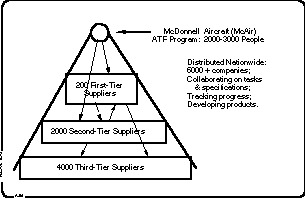 Figure-7:: Islands in supplier hierarchy of a major aircraft program would
be very costly.
Figure-7:: Islands in supplier hierarchy of a major aircraft program would
be very costly.
Also, a program of this size in the aerospace world would typically comprise a 10 to 30 year life cycle. So when we talk of Different Time / Same Place, and Different Time / Different Place (Figure-3), the definition of "Time" includes decades, not just hours or days. Even in a short time span and without turnover, it is not unheard of for a project team, in any industry, to occasionally lose sight of some important design decision trails, and consequently waste time and money repeating old discussions or past mistakes. Consider the likelihood, and the cost, of such lost history occuring in this long-term environment. 8F
To comply with the Department of Defense's (DoD's) forthcoming Computer-aided Acquisition and Logistic Support (CALS) mandate, all documents exchanged between the DoD and its contractors must be transmitted, updated, and managed in a standard, computerized form -- a truly gigantic interoperability challenge. 8G
Two Companies Teaming. The situation is even more complex: as with most new, large-system, DoD procurements, the Air Force requires ATF bidders to be joint-venture teams comprised of major aerospace firms. In this case, McDonnell Aircraft is teaming with Northrop Aircraft. Figure-8 shows how Northrop would form its part of the program, with several thousand workers internally, in close collaboration with several tiers of suppliers: 8H
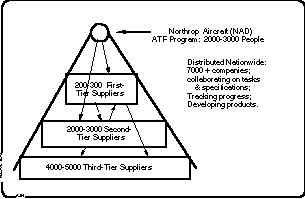 Figure-8:: Islands in supplier hierarchy of a major aircraft program would
be very costly.
Figure-8:: Islands in supplier hierarchy of a major aircraft program would
be very costly.
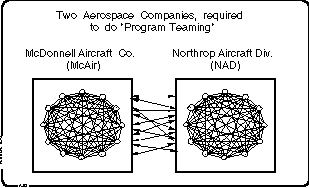 Figure-9:: Close cooperation between large organizations puts new demands
on knowledge-work interchange.
Figure-9:: Close cooperation between large organizations puts new demands
on knowledge-work interchange.
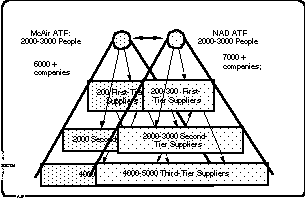 Figure-10:: Close cooperation between large organizations puts new demands
on knowledge-work interchange.
Figure-10:: Close cooperation between large organizations puts new demands
on knowledge-work interchange.
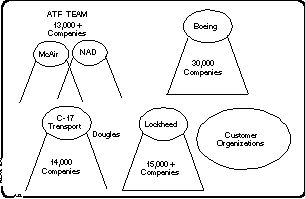 Figure-11:: With common customers and suppliers, an aerospace industry
can't afford islands.
Figure-11:: With common customers and suppliers, an aerospace industry
can't afford islands.
So how will this urgent need be satisfied -- for intense, computer-supported cooperation across the knowledge domains of our rapidly approaching future world? It would seem that our "CSCW future" must include something like the solution characterized below as "an open hyperdocument system." And if so, then all of our research, product development and application exploration should align with and properly affect the concepts and principles by which this future state is pursued. 8M
Two unique issues differentiate this new environment from document-support systems to date: (1) interlinking between objects arbitrarily located within a large, multi-topic and extended-history document & data collection; and (2) extensive, concurrent, online utilization for creating, studying, organizing and linking within and between the many overlapping and nested knowledge domains. 10B
These differences introduce paradigm shifts that produce different system requirements from those that have been evolving in the predominantly CSPW marketplace. For instance, WYSIWYG will give way to WYSIWYN -- "what you see is what you need (at the moment)" -- providing different options for how you'd view selected portions of the document space in your windows. The WYSIWYG view would be but one option (and likely to be utilized with decreasing frequency). Other expected shifts are implicit in some of the following suggested OHS requirements. 10C
Besides special, "document-system architecture" features, full achievement of large-domain CSCW gains awaits two things: 10D
(2) widespread adoption of new knowledge-work processes (or, "knowledge processes"). 10D2
From this is derived the position that a really good set of requirements and functional specifications for an OHS can only emerge from solid prototypical experience, in which advanced knowledge processes were developed and exercised along with advanced tools. 10E2
Note that the following list was derived from extensive experience with the evolution of the AUGMENT System (an OHS prototype owned by McDonnell Douglas) and its concurrent application within numerous real-work pilots. 10E3
Explicitly Structured Documents --where the objects comprising a document are arranged in an explicit hierarchical structure, and compound-object substructures may be explicitly addressed for access or manipulation of the structural relationships. 11B
View Control Of Objects' Form, Sequence And Content --where a structured, mixed-object document may be displayed in a window according to a flexible choice of viewing options -- especially by selective level clipping (outline for viewing), but also by filtering on content, by truncation or some algorithmic view that provides a more useful view of structure and/or object content (including new sequences or groupings of objects that actually reside in other documents). Editing on structure or object content from such special views would be allowed whenever appropriate. 11C
The Basic "Hyperdocument" --where embedded objects called "links" can point to any arbitrary object within the document, or within another document in a specified domain of documents -- and the link can be actuated by a user or an automatic process to "go see what is at the other end," or "bring the other-end object to this location," or "execute the process identified at the other end." (These executable processes may control peripheral devices such as CD ROM, video-disk players, etc.) 11D
Hyperdocument "Back-Link" Capability --when reading a hyperdocument online, a worker can can utilize information about links from other objects within this or other hyperdocuments that point to this hyperdocument -- or to designated objects or passages of interest in this hyperdocument. 11E
The Hyperdocument "Library System" --where hyperdocuments can be submitted to a library-like service that catalogs them and guarantees access when referenced by its catalog number, or "jumped to" with an appropriate link. Links within newly submitted hyperdocuments can cite any passages within any of the prior documents, and the back-link service lets the online reader of a document detect and "go examine" any passage of a subsequent document that has a link citing that passage. 11F
Hyperdocument Mail --where an integrated, general-purpose mail service enables a hyperdocument of any size to be mailed. Any embedded links are also faithfully transmitted -- and any recipient can then follow those links to their designated targets in other mail items, in common-access files, or in "library" items. 11G
Personal Signature Encryption --where a user can affix his personal signature to a document, or a specified segment within the document, using a private signature key. Users can verify that the signature is authentic and that no bit of the signed document or document segment has been altered since it was signed. 11H
Access Control --Hyperdocuments in personal, group, and library files can have access restrictions down to the object level. 11I
Link Addresses That Are Readable and Interpretable by Humans --one of the "viewing options" for displaying/printing a link object should provide a human-readable description of the "address path" leading to the cited object; AND, that the human must be able to read the path description, interpret it, and follow it (find the destination "by hand" so to speak). 11J
Every Object Addressable --in principle, every object that someone might validly want/need to cite should have an unambiguous address (capable of being portrayed in a manner as to be human readable and interpretable). (E.g., not acceptable to be unable to link to an object within a "frame" or "card.") 11K
Hard-Copy Print Options to Show Addresses of Objects and Address Specification of Links --so that, besides online workers being able to follow a link-citation path (manually, or via an automatic link jump), people working with associated hard copy can read and interpret the link-citation, and follow the indicated path to the cited object in the designated hard-copy document. 11L
Shared-Window Teleconferencing --where remote distributed workers can each execute a related support service that provides the "viewing" workers with a complete dynamic image of the "showing" worker's window(s). Used in conjunction with a phone call (or conference call), the parties can work as if they are sitting side-by-side, to review, draft, or modify a document, provide coaching or consulting, and so on. Control of the application program (residing in the "showing" worker's environment) can be passed around freely among the participants. 12B
Inter-Linkage Between Hyperdocuments and Other Data Systems --for instance, a CAD system's data base can have links from annotations/comments associated with a design object that point to relevant specifications, requirements, arguments, etc. of relevance in a hyperdocument data base -- and the back-link service would show hyperdocument readers which passages were cited from the CAD data base (or specified parts thereof). 12C
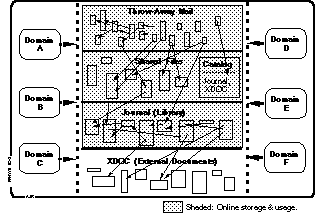 Figure-12:: Interoperable knowledge domains share and exchange documents.
Figure-12:: Interoperable knowledge domains share and exchange documents.
 Figure-13:: Providing for extensive interoperability will be expensive.
Figure-13:: Providing for extensive interoperability will be expensive.
How do you decide how far to go? You'd compare the value of A vs. B, or B vs. C. And you'd say, "Well, let's see, with each successive choice I'd save more money, wouldn't I?" So how much more? We don't know how to quantify it yet. But, once you start finding a way to make some of the major sub-domains interoperable, by the time you've picked these selective lines in Choice A or B, what would be the incremental cost in dollars and effort to get Choice C? 14C
But the real question is, what does it cost in dollars and effort NOT to have the interoperability. 14D
User organizations must realize that they can't just sit back and wait for the standards groups and computer vendors to deliver this, because there hasn't yet been enough orientation or application experience in this area. It seems necessary for the larger user organizations to take responsibility, to become pro-active -- e.g., with exploratory pilots, active development of associated knowledge processes, and cooperative requirements definition -- and then show the vendors that there is a sizable market for this. 15B
But they must also realize that it isn't just a matter of specifying, procuring, and installing the resulting system -- they have to learn how to employ it effectively in this extremely complex environment. And they must realize that they have to cooperate more intensively than before: The stakes are extremely large; there is too much to learn and events are moving too rapidly; the resources and degree of stakeholder coordination involved are both very high. 15C
To find this effort emerging from within the aerospace industry seems likely enough to me: it is the most complex work environment I know of, and a most urgent candidate for harnessing the benefits of wide-area CSCW and effective knowledge-domain interoperability. But other large organizations also have pressing needs for exactly this same capability -- for example, car manufacturers, computer vendors, government agencies, consulting firms, universities, consortia, and standards groups. 15D
To me there is a real need for a cooperative movement -- among large organizations that are heavily dependent on group knowledge work -- to coordinate planning and operation of advanced, cost-effective pilot explorations in this area and to share the experiences and results. This relates to what I am currently doing at Stanford University with the Bootstrap Project: exploring with a number of larger organizations how a "cooperative, CSCW community" could be set up and run to provide both valuable pilot-application experience and substantive knowledge products. 15E
One of the first projects of this community would be to collaborate on the requirements for an open hyperdocument system, and on a procurement approach. The community would employ a prototype OHS platform (initially AUGMENT from McDonnell Douglas) to collaborate on this and other related projects. This hands-on experience will be an important part of the exercise, and should provide valuable insight into how to employ these capabilities effectively. Similar pilot trials will be launched within member organizations. 15F
Ref-2. Engelbart, Douglas C., "Authorship Provisions in Augment," COMPCON '84 Digest: Proceedings of the 1984 COMPCON Conference, San Francisco, Ca., February 27 - March 1, pp. 465-472 (OAD,2250,). Re-published in Computer Supported Cooperative Work: A Book of Readings, ed. Irene Greif, Morgan Kaufmann Publishers, Inc., San Mateo, CA 1988, pp 67-78. 17B
Ref-3. Engelbart, Douglas C., and Lehtman, Harvey G., "Working Together," BYTE Magazine, December 1988, pp. 245-252. 17C